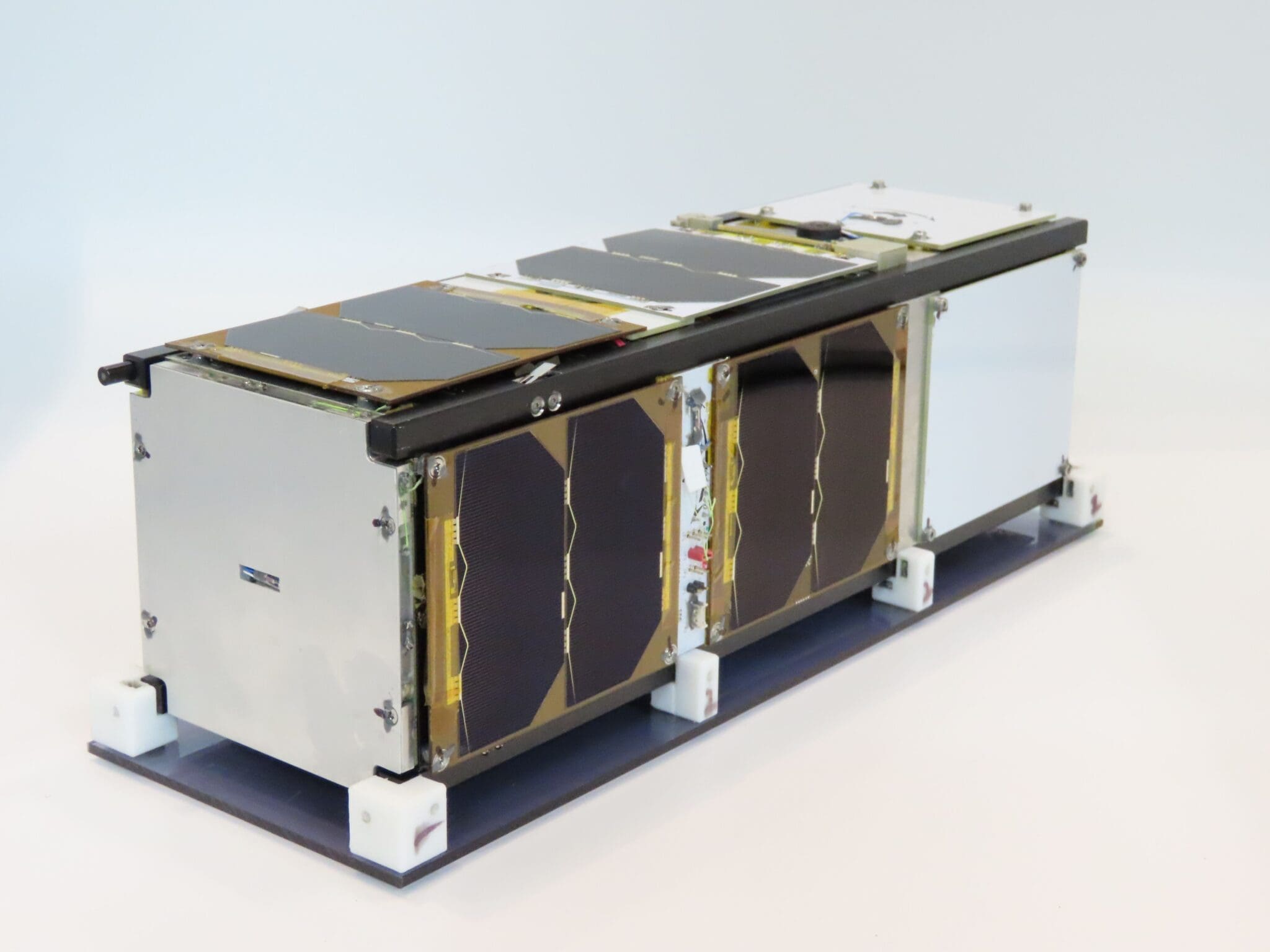An Australian satellite was launched aboard a Space-X Falcon 9 rocket from Cape Canaveral, Florida on Saturday.
The satellite, dubbed CUAVA-1, is bound for deployment from the International Space Station, carrying four experimental payloads in the hopes of giving scientists and researchers fresh insights from near-Earth orbit.
CUAVA-1 is a cubesat: a low-cost and simple way to access near-Earth orbit for scientific and commercial purposes. Cubesats are built from small boxes (only 10cm cubed, weighing no more than 1.3 kilograms each!) that are chock-full of cutting edge technology. In the case of CUAVA-1, picture three of these small cubes joined together, making a rectangular box around 30 cm long and weighing around 3 kilograms in mass.

The launch of the satellite, which for the next 12 months will live 400 kilometres above Earth, checks a milestone in the lead project of the Australian Research Council Training Centre for CubeSats, Uncrewed Aerial Vehicles and their Applications (CUAVA).
According to a press release received by Honi, the CUAVA-1 mission aims to: observe the Earth with novel imaging technology; investigate the Earth’s plasma environment and space weather with the satellite’s radiation detectors; and test equipment that will go on to be used in future satellites that will search for signs of life on planets around Alpha Centauri, our nearest star system. The bright dreams attached to this tiny cubesat are fixed on future horizons of space exploration.
Based at the University of Sydney, CUAVA involves researchers and scientists from universities around the world, including the University of NSW, Macquarie University, multiple Australian commercial and government partners and the Rochester Institute of Technology in the United States.

The CUAVA project is partially funded by the NSW Government under the Australian Research Council’s Industrial Transformation Training Centres scheme. CUAVA’s government connections extend to its partnerships with the Australian Bureau of Meteorology and the Department of Defence. The responsibilities and parameters of CUAVA’s partnership with the Department of Defence is as yet unclear.
CUAVA is also commercially partnered with Air@Wave Communications, ArborCarbon, HyVista and Saber Astronautics.
“This mission shows that Australian universities are at the forefront of our emerging national space industry,” said Professor Iver Cairns, of USyd’s own School of Physics, and Director of Cuava. “Our CUAVA Training Centre is leading in the development of near-Earth space technology and is a critical link in training the next generation of space engineers and scientists.”
In the largely uncharted cosmos, the CUAVA-1 launch sees the Australian space industry take a step towards building international space cooperation.
You can find photos and videos from the CUAVA project here.





